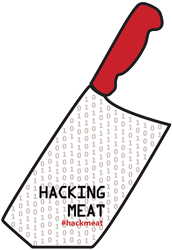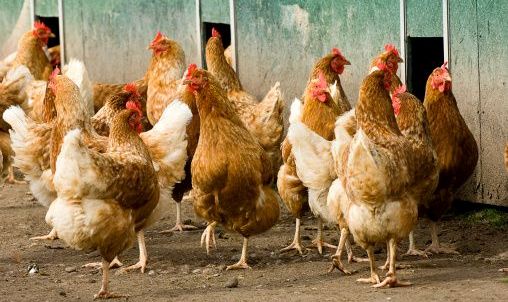
Food+Tech Connect and GRACE Communications Foundation present Hacking Meat, an online conversation exploring how information and technology can be used to hack (or reimagine) a more sustainable, profitable and healthy future for meat. Join the conversation and share your ideas or product requests in the comments, on Twitter using #hackmeat, Facebook , Tumblr or at the Hack//MeatSilicon Valley happening June 21-23 in Palo Alto.
Guest Post by Andrew Gunther of Animal Welfare Approved
No one can deny the growing importance of social media when it comes to food and farming. You only have to look at the recent media storm surrounding Lean Finely Textured Beef – aka “Pink Slime” – to know that we are in a very different world, where it’s possible to share information about food and farming as we have never been able to before. Bad news travels fast and, heck, this news simply took off!
As some people wake up to the impact of industrial farming on our health, animal welfare and the environment, growing legions of conscientious consumers are hungry for information about the food they eat. They want to make sure their food choices are the right ones and the advent of social media channels such as Facebook and Twitter is opening up new opportunities for farmers, advocates and consumers to reconnect and build relationships around the essential act of eating.
But agriculture – despite Big Ag’s best efforts – doesn’t suit itself to 140 characters. Farming is very complex, as are the issues, and with the growing distance between the farm and plate, the story that needs to be told is getting longer, not shorter. Add this to the sheer size of the change we need and the aged infrastructure. Character caps (140 characters on twitter) simply act to confuse rather than to inform. Not only are the vast majority of livestock farms and ranches not situated anywhere near major urban conurbations (meaning that if they do want to sell direct they need to set up complex online sales and distribution systems), but a lot of farmers don’t have the necessary marketing and sales skills to be able to successfully sell direct. Others simply aren’t interested in direct marketing anyway: they just want to get on with the job of farming and producing high-quality food.
Similarly, we need to recognize that the vast majority of consumers do not – and will never – buy their food from their local farmers’ market or farm shop. Nor will they ever “like” Joel Salatin’s Facebook page or “retweet” the daily musings from Michael Pollan’s Twitter feed.
The point I am trying to make is that it requires a unique combination of knowledge and skills to make this emerging social media direct marketing model a real success. Even then, we’re talking about feeding a minority this way. Anyone who suggests that we’re going to feed downtown Baltimore entirely through the individual “social media and farmers market” model is out of touch. Not least because smart phones and computers are expensive and may well have their own environmental challenges.
Social media, and the internet in general, represent extremely powerful communications channels to enable consumers to become more connected with the realities of food animal production systems and the impact their food choices are having on their health, the health of society, and the health of the planet. My point is that we need to be realistic about how relevant this individual social media and farmers’ market model is for the vast majority of our farmers and ranchers who cannot or will not sell direct.
When it comes to feeding future generations sustainably on a significant scale, we need to look at ways of scaling-up sustainable production by utilizing existing distribution infrastructure and networks to supply mass markets. We also urgently need to find ways of cooperating at a much broader level so we can support the majority of sustainable farmers who will not market direct, and to find ways of connecting with the vast body of mainstream consumers whom we have yet to reach. If we fail to do so, we risk not only preaching to the converted, but also marketing to them, too. So, I throw down the gauntlet: help me get the message to a demographic who cannot afford a smart phone or simply don’t know – or even care – about the issues.
The views expressed here are solely those of the author, and do not reflect the views of Food+Tech Connect.
How can we use tech to scale sustainable meat distribution and connect with mainstream consumers? Share your thoughts in the comments below, on Twitter using #hackmeat,on Facebook or at the Hack//Meat SV hackathon happening at The Stanford d.school in Palo Alto, June 21-23.
____________________
 Andrew Gunther joined AWA in April 2008 as Program Director. Previously, he was the Senior Global Animal Compassionate Product Procurement and Development Specialist for Whole Foods Market. He, with his wife and children, also pioneered the world’s first organic poultry hatchery for chickens. Working with pasture based farmers across the U.S. and Canada, AWA provides consumers reassurance that the milk, cheese, eggs and meat bearing the AWA seal come from family farmers using sustainable agriculture methods.
Andrew Gunther joined AWA in April 2008 as Program Director. Previously, he was the Senior Global Animal Compassionate Product Procurement and Development Specialist for Whole Foods Market. He, with his wife and children, also pioneered the world’s first organic poultry hatchery for chickens. Working with pasture based farmers across the U.S. and Canada, AWA provides consumers reassurance that the milk, cheese, eggs and meat bearing the AWA seal come from family farmers using sustainable agriculture methods.
Photo Courtesy: justfoodnow.com



